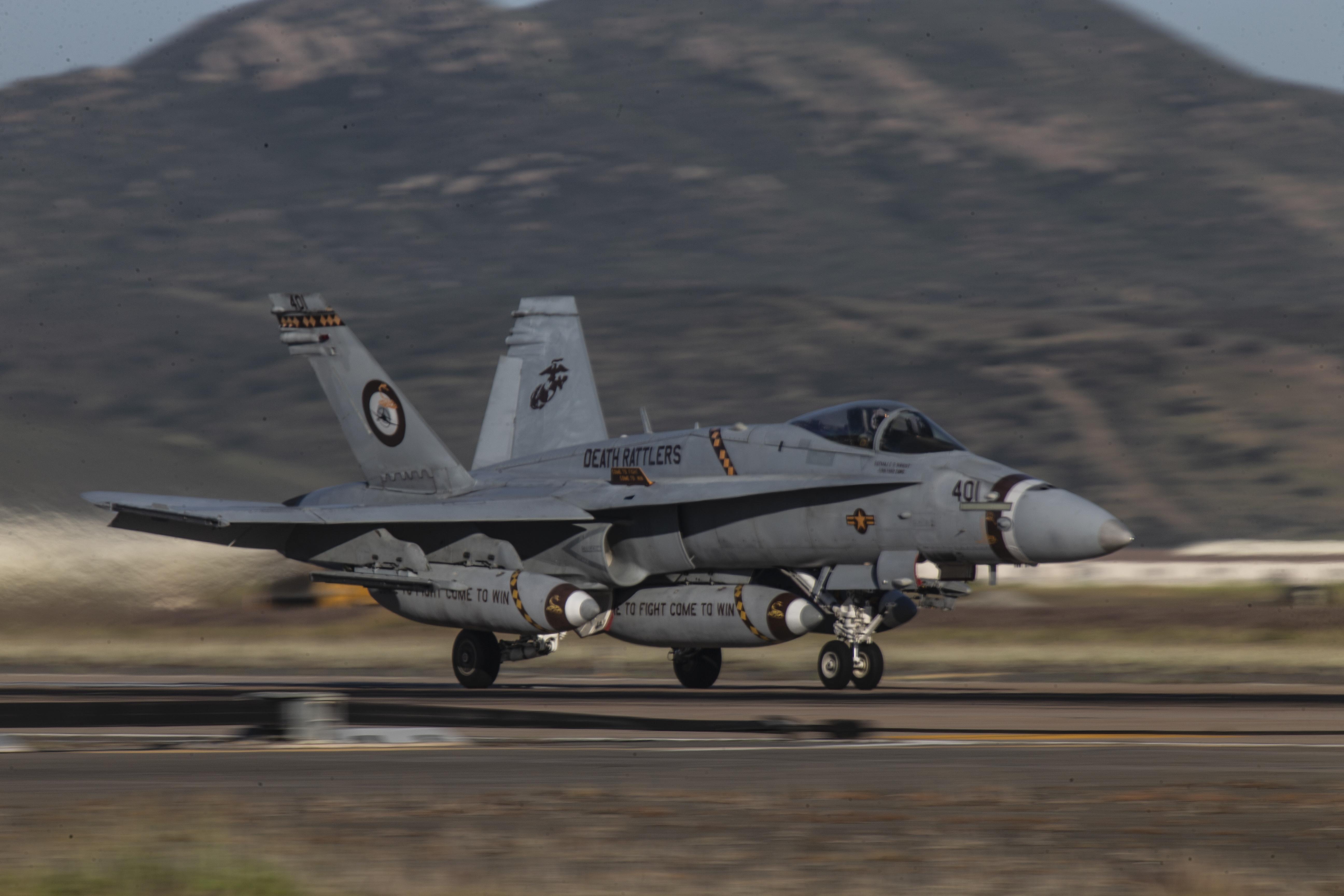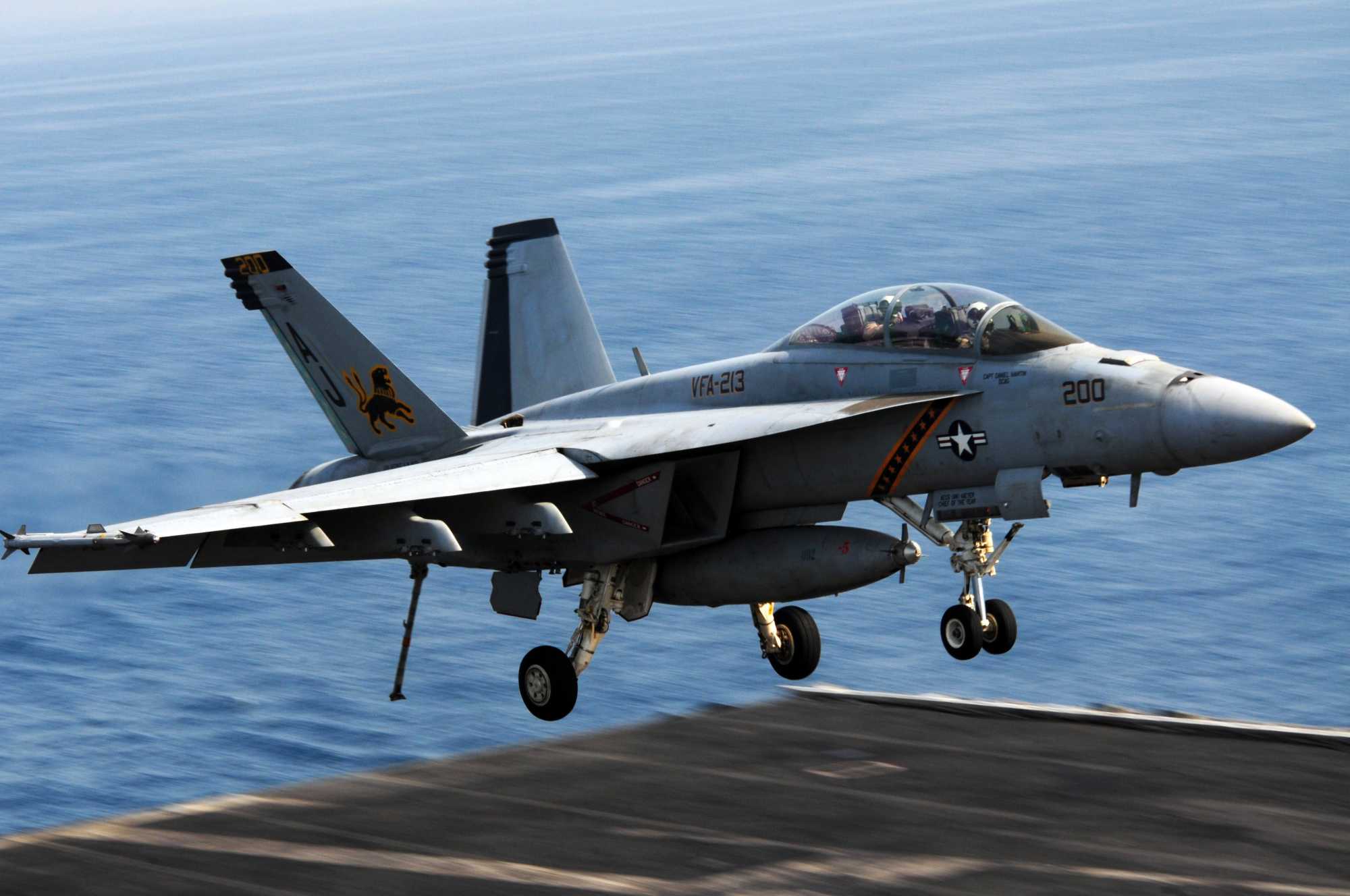The ‘Top Gun: Maverick’ F/A-18E/F Super Hornet fighter jets, the mainstay of the US Navy’s operations globally, are aging at an unprecedented rate and performing poorly compared to the older Hornets on which they are based.
A key Congressional Budget Office report made public on February 9 has revealed that the Navy’s fleet of Super Hornet fighter jets, which debuted in the late 1990s, is aging much faster than the fleet of F-18 Hornets that came before it.
“Super Hornets have aged more adversely than the F/A-18C/Ds”, notes the report.
The analysis compared the availability of the F/A-18E/F Super Hornets with the more traditional F/A-18C/D Hornets, which were introduced in the middle of the 1980s and continue to be in service to this day.
The report specifies that availability refers to the time an aircraft can be used for training or conducting actual missions. Additionally, ‘use’ is the average monthly flying hours per aircraft.
The report begins by observing that both types of Hornets experienced sharper and steeper drops in availability than the rest of the Navy’s fleet.
However, it states that the Super Hornet availability rates significantly decreased between the mid-2000s and the mid-2010s. The availability of older F/A-18C/D Hornets also fell, but the decline was lengthier and steeper.

According to the CBO’s analysis, the Super Hornets, which were more recent and more modern than the traditional hornets, had lower availability rates than the F/A-18C/Ds when compared at similar ages.
“Compared with F/A-18C/Ds of the same age, the Super Hornet fleet has had lower availability rates. For example, Super Hornet availability at age 10 was about 18 percentage points lower than F/A-18C/D availability at age ten and is comparable to F/A-18C/D availability at age 20.”
The report junks the idea that the newer Super Hornets have seen a remarkable decline in availability due to the wear and tear caused by flying more than their predecessors. This perception was examined because the twin-engine Super Hornets are the backbone of the US Navy’s carrier operations.
The report categorically states, “Monthly flying hours of Super Hornets modestly exceeded those of F/A-18C/Ds only in the initial years of operation of both fleets. By age 10, however, Super Hornets were flying four fewer hours per month than 10-year-old F/A-18C/Ds.

The US Navy still operates the F/A-18C/D despite the extensive deployment and use of the F/A-18 Super Hornets. The latter is a twin-engine, multi-role, carrier-capable fighter variant of the older F/A-18 Hornet with advanced weaponry and superior fuel-carrying capability.
Recently, EurAsian Times reported that the Super Hornet would practice carrier landings along with the F-35 at the Self-Defense Forces base on Mageshima near China.
The Super Hornets have been upgraded and fielded into numerous variants with cutting-edge technologies, including the latest ‘super duper’ Hornet configuration. The US Navy took delivery of the Block III variant of the aircraft from Boeing more than a year ago, in September 2021.
This aircraft is currently competing against Rafale-Marine to secure a contract with the Indian Navy which is evaluating the two jets for carrier operations aboard its new aircraft carrier INS Vikrant.
Against that backdrop and the extensive utilization of this aircraft in US Navy operations, the sharply declining availability rates could be a cause of concern.
Why Is Super Hornet Aging Faster Than The Older Hornet?
The US Navy informed the CBO that various factors contributed to the sharp differences in availability between the two generations of F-18 aircraft. The report noted that there were “greater levels of galvanic corrosion arising from the greater use of composite metals in Super Hornets.”

Going by the report, galvanic corrosion refers to the “damage induced when two dissimilar materials are coupled in a corrosive electrolyte. It occurs when two (or more) dissimilar metals are brought into electrical contact under water.”
The report also states that the future of availability rates for aging Super Hornets is up in the air. “The experiences of the oldest Super Hornets suggest that their availability is likely to continue to decline as the fleet ages,” the report states.
“A similar trend has been observed for many fighter and attack aircraft. But some fleets have had long periods with stable availability rates.
It further notes, “Because the Super Hornet is a relatively new aircraft, the Navy could take actions that might increase or stabilize the aircraft’s availability rate, such as increasing funding for maintenance.”
However, lower availability rates are not only plaguing the Super Hornets. According to a January 2022 CBO report, between 2001 and 2019, fewer aircraft were available for use by the Air Force and the Department of the Navy, which also includes the Marine Corps, compared to the period before that.
The F-35 fighter jets also saw a decline in availability earlier. They have been in the eye of the storm on multiple occasions owing to several issues that have led to their grounding.
For instance, a Defense News report from March 2022 noted that the US military’s 214 combat-coded F-35s averaged 70% availability throughout 2021. That number dipped as low as 63% at one point.
The Super Hornets continue to form the backbone of the US Navy fleet that also operates the F-35. The Super Hornet fleet of the Navy will have its hardware and software updated and modernized over five years, according to a $2 billion contract awarded to Boeing by the Defense Department in December 2022.
- Contact the author at sakshi.tiwari9555 (at) gmail.com
- Follow EurAsian Times on Google News




